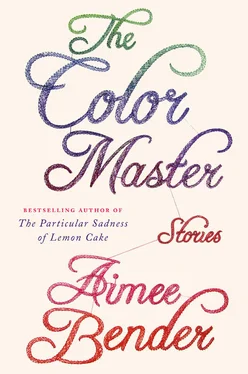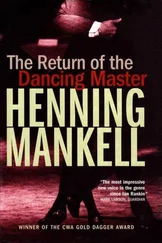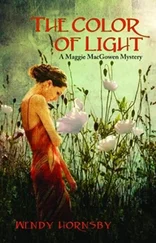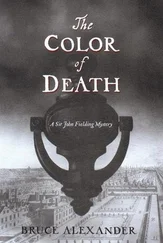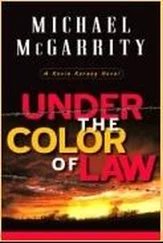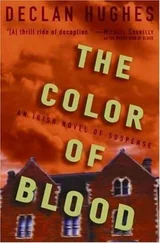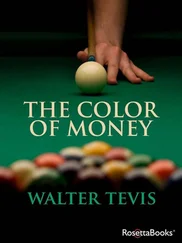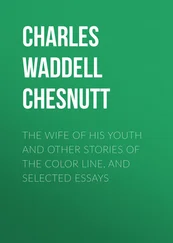So we sent over the goat, and when the Color Master came into the studio, we’d just finished the fourth dyeing of the rock shoes. They were drying on a mat, and they looked pretty good. I told Cheryl that her visualization of the mountain had definitely helped. She blushed. I said, too, that Edwin’s contribution of the ground rock particles had added a useful kind of rough texture. He kicked a stool leg, pleased. I hadn’t done much; I’m not very skilled, but I like to commend good work when I see it.
The Color Master approached, wearing a linen sheath woven with blue threadings. Her face hinting at gaunt. She greeted us all, and stood at the counter where the shoes were drip-drying.
Nice work, she said. Esther, who had fronted the dyeing process, curtsied.
We sprinkled rocks into the dye, she said.
A fine choice, said the Color Master.
Edwin did a little dance in place by his table. The goat settled on a pillow in the corner and began to eat the stuffing.
The Color Master rolled her shoulders a few times, and when the shoes were dry, she laid her hands upon them. She lifted them to the sunlight. She picked up a rock and looked at it next to the shoes. She circled both inside different light rays. Then she went to the palette area and took out a handful of blue dust. We have about one hundred and fifty metal bins of this dust in a range of colors. The bins stand side by side, running the perimeter of the studio. They are narrow, so we can fit a whole lot of colors, and if someone brings in a new color, we hammer down a new bin and slide it into the spectrum, wherever it fits. One tailor found an amazing rich burgundy off in the driest part of the forest, on a series of leaves; I located, once, over by the reddish iron deposits near the lake, a type of dirt that was a deeper brown than soil. Someone else found a new blue in a desiccated pansy, and another in the feathers of a dead bird. We have instructions to hunt for color everywhere, at all times.
The Color Master toured the room, and then took that handful of blue dust (and always, when I watch, I am thrilled—blue? how does she know, blue?), and she rubbed the dust into the shoe. Back to the bins, where she got a black, a dusty black, and then some sage green. While she worked, everyone stood around, quiet. We dropped our usual drudgery and chitchat.
The Color Master worked swiftly, but she added, usually, something on the level of forty colors, so the process generally took over two hours. She added a color here, a color there, sometimes at the size of salt particles, and the gray in the shoe shifted and shaded under her hands. She would reach a level and ask for sealant, and Esther would step forward, and the Color Master would coat the shoe to fasten the colors and then return to the sunlight, holding a shoe up, with the rock in her other hand. This went on for about four rounds. I swear, I could start to feel the original mountain’s presence in the room, hear the great heavy lumbering voice of it.
When she was done, the pair was so gray, so rocklike, you could hardly believe they were made of leather at all. They looked as if they had been sheared straight from the craggy mountainside.
Done, she said.
We circled her, bowing our heads.
Another triumph, murmured Sandy, who cannot color-mix to save her life.
The Color Master swept her gaze around the room, and her eyes rested on each of us, searching, slowly, until they finally settled on me. Me?
Will you walk me home? she said in a deep voice, while Esther tied an invoice to the foot of a pigeon and then threw it out the window in the direction of the dukedom.
I would be honored, I mumbled. I took her arm. The goat, full of pillow, tripped along behind us.
I am a quiet sort, except for the paying of compliments, and I didn’t know if I should ask her anything on the walk. As far as I knew, she didn’t usually request an escort home at all. Mainly I just looked at all the stones and rocks on the path, and for the first time saw that blue hint, and the blackness, and the shades of green, and that faint edge of purple if the light hit just so. She seemed relieved that I wasn’t asking questions, so much so that it occurred to me that that was probably why she’d asked me in the first place.
At her door, she fixed her eyes on me: steady, aging at the corners. She was almost twice my age, but had always had an allure I’d admired. A way of holding her body that let you know that there was a body there, but that it was private, that stuff happened on it, in it, to it, but it was stuff I would never see. It made me sad, seeing that, knowing how her husband had gone off to the war years ago and never returned, and how it was difficult for her to have people over because of her brother with the bad back, and how, long ago, she had fled her own town for reasons she never mentioned. Plus, she had a thick cough and her own money questions, all of which seemed so unfair when she should’ve been living in the palace, as far as I was concerned.
Listen, she said. She held me in her gaze.
Yes?
There’s a big request coming in, she said. I’ve heard rumors. Big. Huge.
What is it? I said.
I don’t know yet, but start preparing. You’ll have to take over. I will die soon, she said.
Excuse me?
Soon, she said. I can feel it, brewing. Death. It’s not dark, nor is it white. It’s almost a blue-purple. Her eyes went past me, to the sky.
Are you confusing me with someone else? I asked.
She laughed.
Do you mean it? I said. Are you ill?
No, she said. Yes. I mean it. I’m asking for your help. And when I die, it will be your job to finish.
But I’m not very good, I said, twisting. Like at all. You can’t die. You should ask Esther, or Sven—
You, she said, and with a little curt nod, she went into her house and shut the door.
The duke loved his shoes so much he sent us a drawing, by the court illustrator, of him floating, it appeared, on a pile of rocks. I love them, he wrote, in swirly handwriting; I love them, I love them! In addition to a small cash bonus, he offered us horse rides and a feast at the dukedom. We all attended, in all our finery, and it was a great time. It was the last time I saw the Color Master dancing, in her pearl-gray gown, and I knew it was the last even as I watched it, her silver hair swirling out as she glided through the group. The duke kept tapping his toe on the side, holding the duchess’s hand, her free one grasping a handbag the perfect pink of a rose, so vivid and fresh the color seemed to carry a sweet scent even across the ballroom.

Two weeks later, almost everyone was away when the king’s courtier came riding over with the request: a dress the color of the moon. The Color Master was not feeling well, and had asked not to be disturbed; Esther’s father was ill, so she was off taking care of him; Sven’s wife was giving birth to twins, so he was off with her; the two others ahead of me had caught whooping cough; and someone else was on a travel trip to find a new orange. So the request went to me, the apprentice. Just as the Color Master had hoped.
I unrolled the scroll and read it quietly by the window.
A dress the color of the moon?
It was impossible.
First of all, the moon is not a color. It is a reflection of a color. Second, it is not even the reflection of a color. It is the reflection of what appears to be a color, but is really in fact a bunch of bursting hydrogen atoms, far, far away. Third, the moon shines. A dress cannot shine like the moon unless the dress is also reflecting something, and reflective materials are generally tacky-looking, or too industrial. Our only options were silk and cotton and leather. The moon? It is white, it is silver, it is silver-white, it is not an easy color to dye. A dress the color of the moon? The whole thing made me irritable.
Читать дальше
